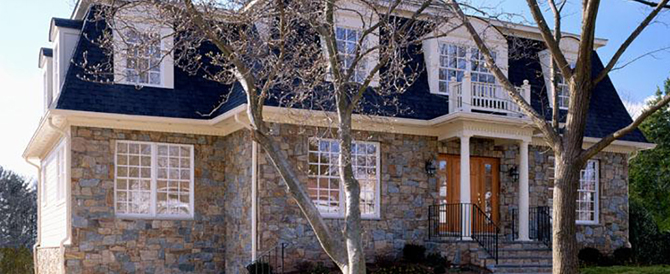So, you’ve decided to finally build that custom home you’ve always dreamed of. You’ve saved your money, picked out the perfect lot, and have the most complete vision of your dream home down to the switch plate covers and the color of cabinet paper. You’ve thought it all through from basement to attic and you’re ready to lay the foundation…but are you really ready?
Poor planning and an inadequate budget can lead way to some wayward, inconvenient and disastrous mistakes. When you plan on building a custom home, you must come at it from many angles. There is a lot to consider when planning a custom home, including: your current and future lifestyles; how many people will be living in the house currently and in the future; how often you will be entertaining or hosting overnight guests; etc.
Take your time and do your research, both online and in person, and be sure to meet with custom home building professionals. Poor design choices can make your custom home not only uncomfortable, but downright unhealthy. Professionally licensed and certified contractors, like us at MDV Remodeling with our TruYouDesign™ process, are trained to help you make effective decisions. They will help guide you as to where you can save a few dollars, as well as where you absolutely should not cut corners. Below are the most common mistakes that we see when planning a custom home:
1. Poor overall planning.
When designing your own home, you should take your lifestyle and habits into consideration. How long do you plan to stay in this home? Will you need to accommodate safety features for new or young children? Or might you need to think of your own needs later in life as you reach retirement age and beyond? All of these questions should be taken into account before you put pencil to paper when planning a custom home build. Try to think ahead and see the big picture on a long term basis to see what you will need from your home.
2. Pay attention to your HVAC system.
Poor planning here can lead to issues with moisture and toxic mold growth, which can cause great health concerns. Furthermore, careful attention should be given to the size of the units you choose for your home. Models that are too small will be underperforming and won’t cool and heat your home efficiently, whereas those that are too large will utilize too much energy. Neither is an ideal position to be in for the long term.
3. Poor space planning.
Unless you plan to build a very large home, space and design is crucial. Ample storage is necessary, but also pay careful attention to where you plan your storage space. Carefully consider whether the master bedroom really needs an oversized walk-in closet or whether the space could potentially be added to your bedroom or master bath. Keep an eye on where you plan for closets, especially in each bedroom and in a main hallway. Do some online research for space-saving and interesting storage ideas in an effort to best utilize the space you will have available – Pinterest is a big help with great ideas!
4. Poorly lit homes.
Light fixtures and outlets should be plentiful, as should windows. Windows should be present in every room and as large as possible. Natural light, wherever possible, should be the main source of light. Skylights are another great option for letting natural light into a bedroom, bathroom or stairway.
5. Placement of the laundry room.
Consideration should be given as to where the most efficient place for the laundry area would be in your home. Placement of the laundry room, or washer and dryer, should be relatively close to the bedrooms. This will save time and energy and help the laundry chores move more smoothly. Having the laundry room and bedrooms all on one floor is also an ideal arrangement for aging-in-place. Having a home that can adapt to future mobility concerns and limitations will help you stay happily in your home.
6. Placement of the bedroom.
The master bedroom needs to be as far away from everyday noise and traffic as possible. The master bedroom should not be near or above the garage if members of your family are likely to be coming and going while you are asleep or resting. It would be advisable to keep the master bedroom away from the central living areas as well. If your home is to be on one level, the master bedroom should ideally be at the far end of the house, and should not share a wall with the central living area.
7. Placement of the kitchen.
Preferable placement of the kitchen is near a garage or back entrance, as well as near the dining and living areas. The kitchen tends to get a lot of through traffic and its placement, therefore, would be best to avoid foot traffic through the main living areas. Check out our blog on Kitchen Workflow
8. Placement of the garage/mud room
Garages and mud rooms should be on the main level of the house, near the kitchen, because they can often be part of heavy traffic areas with people coming into the house with dirty sports attire, heavy backpacks, bags of groceries, and other large objects. Plus, it’s usually preferable to limit dirt and chaos to the garage or mud room area.
9. Letting someone tell you what you need.
You know your family and your family’s lifestyle and needs best. Professionals can make suggestions, but they cannot tell you what you do and don’t need. Accept professional advice, but go with your gut if something doesn’t sound like it will fit with your lifestyle.
Many things go into building a custom home besides the materials. By planning ahead, you can avoid a lot of unnecessary headaches and frustrations. Give MDV a call or request a free estimate, and we’ll be happy to help you plan the home of your dreams!

